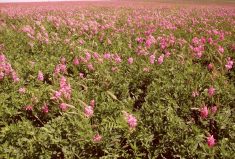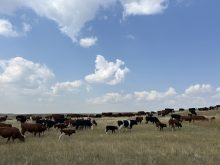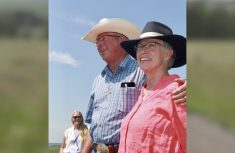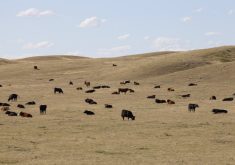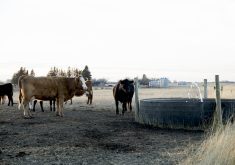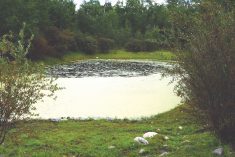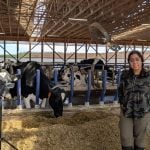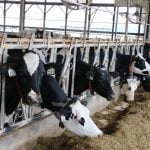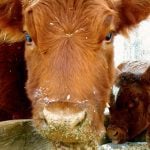As drought grips Western Canada and parts of Ontario, producers need to watch water quality and mineral consumption.
Dr. Cheryl Waldner, professor and research chair at the Western College of Veterinary Medicine, says that total dissolved solids and sulphates are two issues that farmers and ranchers should be testing for right now. Waldner was one of several experts fielding questions from farmers and ranchers during a Beef Cattle Research Council (BCRC) webinar on managing through drought this summer.
Waldner says that’s she’s not an expert on mass production water treatment for cattle. But “something as simple as pumping water out of the dugout into a trough” can improve water quality for cattle. By pumping from under the surface, farmers can reduce the risk of blue-green algae poisoning, as well as reducing iron and “stirred-up dirt,” she adds.
Read Also

What to know before you go to Agribition 2025
If you’re attending Agribition 2025, this is the place to find out about tickets, dates and what’s happening this year.
“Looking at trying to haul water to dilute if you’ve got particularly bad water sources — trying to dilute water by hauling from a better source and mixing — is something that we’ve done on our own operation and has worked out okay for us rather than looking at formal water treatment.”
Dr. Bart Lardner, who also spoke during the webinar, adds that aeration in dugouts can mitigate blue-green algae levels. While it’s likely too late to install an aeration system this year, it’s something to keep in mind for next year. Blue-green algae needs phosphorus, which comes from plant decomposition. Aeration does “extend the quality of the water in that pond or dugout,” he says.
Producers also need to keep an eye on mineral and salt consumption during hot and dry weather, especially if water quality deteriorates. High total dissolved solids or very salty water can cause cows to “back off” on their mineral intake, Waldner says. That makes it “even harder than normal to get good free-choice mineral consumption into these animals.”
Waldner suggests making sure minerals and vitamins are fresh and available near the cattle to encourage consumption, especially heading into the fall and winter. Optimizing mineral and vitamin consumption is an important part of maintaining “health and reproductive performance in years like this,” she adds.
Waldner says if possible, mixing copper into feed is the best way to get copper into cows.
“The rumen boluses work okay, but in our hands to date they have not been cost effective,” she says, adding that she’s part of a trial led by Lardner looking into an injectable copper and trace mineral supplement.
“We’re hoping that that trial will show us that it actually does work under Canadian conditions and that it does make a difference on the reproductive effects that we see with low copper, either directly or through secondary copper deficiency.”




